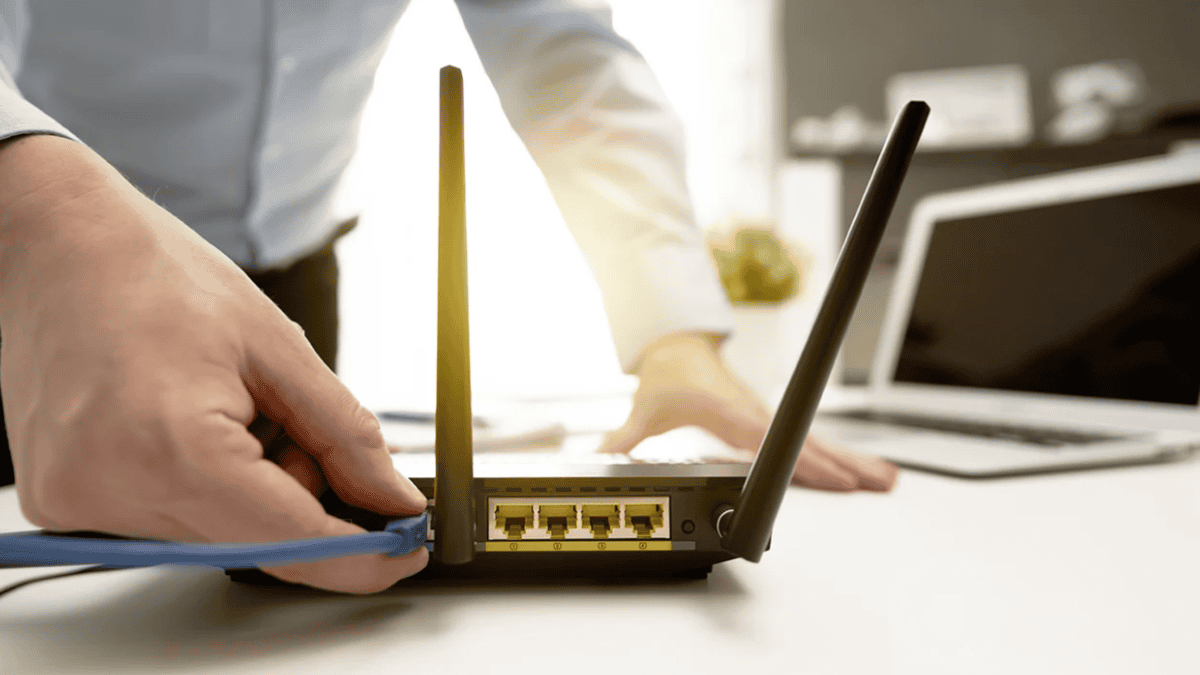Router configuration is a critical aspect of managing network devices. Understanding how to access and modify these settings can significantly enhance network performance and security, especially when handled by professionals in IT support.
Importance of Accessing Router Configuration
Accessing router configuration is essential for several reasons. It allows users to manage network settings, troubleshoot connectivity issues, and enhance security measures. By understanding how to access these configurations, users can ensure their network operates efficiently and securely.
3 Basic Concepts of Router Configuration
Router configuration involves several fundamental concepts that users should be familiar with. These include understanding IP addresses, subnet masks, and default gateways. Each of these elements plays a vital role in how devices communicate within a network.
| Concept | Description |
| IP Address | A unique identifier for each device on a network. |
| Subnet Mask | Defines the network and host portions of an IP address. |
| Default Gateway | The device that routes traffic from a local network to external networks. |
Familiarity with these basic concepts is crucial for effectively accessing and managing router settings. Understanding these elements will empower users to make informed decisions regarding their network configurations.
Preparing to Access Router Configuration
Before accessing the router configuration, it is essential to prepare adequately. This preparation involves gathering necessary information and ensuring proper connectivity.
Gather Necessary Information
To access the router configuration, certain information must be collected beforehand. This includes the router's default IP address, login credentials, and any specific settings that may need to be adjusted.
| Information Type | Details |
| Default IP Address | Common addresses include 192.168.1.1, 192.168.0.1, or 10.0.0.1 |
| Username | Often "admin" or "user" |
| Password | Default passwords may be "admin," "password," or left blank |
| Network Name (SSID) | The name of the wireless network |
| Connection Type | Wired (Ethernet) or Wireless |
Ensure Proper Connectivity
Establishing a stable connection to the router is crucial for accessing its configuration. Users should verify that their device is connected to the router, either through a wired connection or via Wi-Fi.
| Connection Type | Steps to Ensure Connectivity |
| Wired Connection | 1. Connect an Ethernet cable from the router to the device.
2. Check for a solid link light on the router. |
| Wireless Connection | 1. Ensure the device is connected to the correct SSID.
2. Verify that the Wi-Fi signal is strong. 3. Enter the correct Wi-Fi password if prompted. |
Gathering the necessary information and ensuring proper connectivity, users can confidently proceed to access the router configuration.
Accessing Router Configuration
Accessing the router configuration is a crucial step for managing network settings effectively. This section outlines the methods for accessing the configuration through a web browser and provides information on default IP addresses and login credentials.

Using a Web Browser
To access the router configuration, one can use a web browser. This method is straightforward and commonly used. Here are the steps to follow:
- Open a Web Browser: Launch any web browser on a device connected to the network.
- Enter the Router's IP Address: In the address bar, type the router's IP address and press Enter. This will direct the browser to the router's login page.
Default IP Addresses and Login Credentials
Most routers come with default IP addresses and login credentials. Knowing these can simplify the process of accessing the configuration. Below is a table listing common default IP addresses and their corresponding default usernames and passwords.
| Router Type | Default IP Address | Default Username | Default Password |
| Linksys | 192.168.1.1 | admin | admin |
| Netgear | 192.168.1.1 | admin | password |
| TP-Link | 192.168.0.1 | admin | admin |
| D-Link | 192.168.0.1 | admin | admin |
| Asus | 192.168.1.1 | admin | admin |
If the default credentials have been changed, it may be necessary to consult the router's manual or reset the device to factory settings to regain access. Understanding these details is essential for SMEs seeking to manage their IT infrastructure effectively.
Navigating Router Settings
Understanding how to navigate router settings is essential for effective network management. This section covers common settings that users may need to configure, as well as advanced options for more experienced users.
5 Common Settings to Configure
Accessing router configuration often involves adjusting several key settings. These settings can help optimize network performance and enhance security.
| Setting | Description |
| SSID (Network Name) | The name of the wireless network that users connect to. |
| Password | The security key required to access the network. |
| DHCP Settings | Configuration for dynamic IP address assignment to devices on the network. |
| Firewall Settings | Options to enable or disable the router's built-in firewall for security. |
| Port Forwarding | Rules that allow external devices to access services on the local network. |
Advanced Configuration Options
For users with more technical expertise, advanced configuration options provide additional control over the network. These settings can be crucial for optimizing performance and ensuring security.
| Setting | Description |
| Quality of Service (QoS) | Prioritizes bandwidth for specific applications or devices to improve performance. |
| VPN Passthrough | Allows VPN traffic to pass through the router, enabling secure remote access. |
| Static IP Address Assignment | Manually assigns a fixed IP address to a device on the network. |
| MAC Address Filtering | Restricts network access to specific devices based on their MAC addresses. |
| Firmware Updates | Options to update the router's software for improved functionality and security. |
Understanding these common and advanced settings, users can effectively manage their router configuration and enhance their network's performance and security.
Troubleshooting Router Access
Accessing router configuration can sometimes present challenges. Understanding common issues and their solutions can help streamline the process. Additionally, knowing how to reset router settings can be crucial when access is lost.
5 Common Issues and Solutions
Several issues may arise when attempting to access router settings. Below is a table outlining common problems and their corresponding solutions.
| Issue | Description | Solution |
| Unable to Connect | The device cannot connect to the router. | Check physical connections and ensure the router is powered on. Restart the device. |
| Incorrect IP Address | The entered IP address is incorrect. | Verify the default IP address for the router model. Use the command prompt to find the correct address. |
| Wrong Login Credentials | The username or password is incorrect. | Reset the router to factory settings if the credentials are forgotten. |
| Browser Issues | The web browser does not load the router interface. | Clear the browser cache or try a different browser. Disable any VPN or proxy settings. |
| Firewall Blocking | Security software may block access. | Temporarily disable firewall or security software to test access. |
Resetting Router Settings
If access to the router configuration is still not possible, resetting the router may be necessary. This process restores the router to its factory settings, erasing all custom configurations. The following are the steps in resetting router settings:
- Locate the Reset Button: Look for the router’s reset button — it’s often a tiny pinhole you’ll need a paperclip or pin to press.
- Press and Hold: Use a paperclip or similar object to press and hold the reset button for about 10 seconds.
- Wait for Reboot: Release the button and wait for the router to reboot. This may take a few minutes.
- Reconfigure the Router: After resetting, access the router using the default IP address and login credentials. Reconfigure settings as needed.
Addressing common issues and knowing how to reset router settings, users can effectively troubleshoot access problems and regain control over their router configuration.
Security Considerations
To maintain a secure and efficient network, it is crucial to follow best practices for router access and configuration. Strengthening security measures can prevent unauthorized access, protect sensitive data, and enhance overall network performance. The following sections outline key strategies and best practices to safeguard your router and network.

Securing Router Access
Securing access to a router is essential for protecting the network from unauthorized users. Implementing strong security measures can help prevent potential breaches and ensure that sensitive information remains safe. Here are some key strategies for securing router access:
| Security Measure | Description |
| Change Default Credentials | Update the default username and password to a unique combination. This prevents unauthorized access using common default credentials. |
| Enable WPA3 Encryption | Use the latest Wi-Fi Protected Access (WPA3) encryption to secure wireless connections. This provides stronger protection against unauthorized access. |
| Disable Remote Management | Turn off remote management features unless absolutely necessary. This limits access to the router's settings from outside the local network. |
| Use a Firewall | Enable the built-in firewall on the router to monitor and control incoming and outgoing network traffic. |
| Regularly Update Firmware | Regularly update your router’s firmware to guard against potential security threats and system vulnerabilities. |
Best Practices for Router Configuration
Following best practices for router configuration can enhance security and improve network performance. Here are some recommended practices:
| Best Practice | Description |
| Use Strong Passwords | Use strong, unique passwords made up of letters, numbers, and special characters. Steer clear of anything easy to guess, like birthdays or common words. |
| Segment the Network | Create separate networks for guests and internal users. This limits access to sensitive information and resources. |
| Monitor Connected Devices | Regularly check the list of connected devices to identify any unauthorized access. |
| Disable Unused Services | Turn off any services or features that are not in use, such as WPS or UPnP, to reduce potential vulnerabilities. |
| Backup Configuration Settings | Regularly back up the router's configuration settings to restore them in case of a failure or security breach. |
To learn more about safeguarding your network from threats like DDoS attacks, check out our article on "What You Should Know About DDoS Mitigation Methods." It offers valuable insights into protecting your infrastructure and ensuring smooth, secure operations.
Tech That Grows with You – LK Tech
Implementing these security measures and best practices helps SMEs take control of their router configurations and safeguard their networks from potential threats. At LK Tech, we deliver top-notch IT support tailored to meet the unique needs of every business, ensuring smooth operations and reliable network protection.
Our team offers expert guidance, quick response times, and dependable solutions for all your tech concerns. For businesses searching for trusted IT services in Cincinnati, we’re here to provide the help you need. Reach out to us today and let us keep your systems running securely and efficiently.


